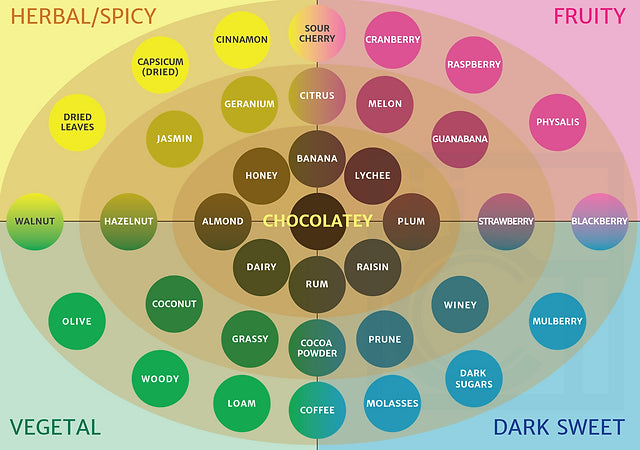A chocolate flavor chart is a visual representation or guide that illustrates the diverse flavor profiles found in different types of chocolate. It helps chocolate enthusiasts, connoisseurs, and professionals to identify and describe the various tastes and aromas present in chocolate. These charts are often used in the context of fine or artisanal chocolate, where the goal is to highlight the unique characteristics of different cacao varieties and the chocolate-making process.
Here are some common elements that might be found on a chocolate flavor chart:
-
Intensity: Describes the strength of the chocolate flavor, ranging from mild to intense.
-
Sweetness: Indicates the level of sweetness in the chocolate, ranging from very sweet to bittersweet.
-
Fruitiness: Notes of different fruits, such as berries, citrus, or tropical fruits.
-
Nutty: Describes nutty flavors, like almonds or hazelnuts.
-
Spiciness: Indicates the presence of spice notes, such as cinnamon, nutmeg, or black pepper.
-
Floral: Notes of flowers or botanicals.
-
Earthiness: Describes flavors reminiscent of soil, wood, or other earthy elements.
-
Creaminess: Refers to the texture and mouthfeel of the chocolate, especially relevant in milk chocolates.
-
Bitterness: Highlights the bitter notes, particularly present in dark chocolates.
-
Acidity: Describes the brightness or acidity of the chocolate, similar to the acidity found in certain types of coffee or wine.
Keep in mind that these charts can vary, and different chocolate makers or organizations may use different descriptors. They are helpful tools for both chocolate makers and consumers to communicate and understand the nuanced flavors found in high-quality chocolate.

